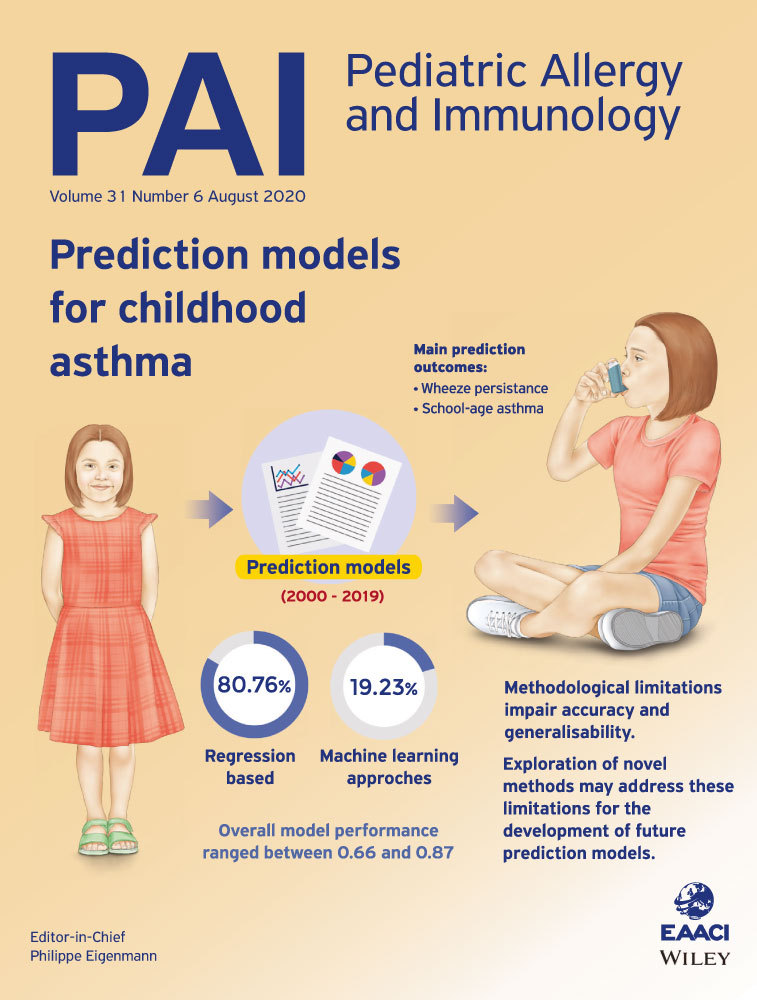Children with nut allergies have impaired gene expression of Toll-like receptors pathway
Funding information
This work was supported by the grants from Telethon-Perth Children's Hospital Research Fund (TPCHRF).
Abstract
Background
Trends in food allergies prompted investigation into the underlying mechanisms. Genetic and epigenetic factors are of high interest, and, in particular, the interplay between genes relating to immune factors directly and indirectly involved in food allergy pathogenesis. We sought to determine potential links between gene expression and epigenetic factors relating to Toll-like receptor (TLR) pathways and childhood food allergies.
Methods
In a cross-sectional study, samples from 80 children with and without food allergies were analysed for gene expression, DNA methylation and a range of immune factors relating to TLR pathways. TLR2, TLR4, CD14, IL5, IL13 and vitamin D were explored.
Results
The importance of these immune factors appeared to vary between the different types of food allergies. Expression of TLR2 (P < .001), TLR4 (P = .014) and CD14 (P = .028) varied significantly between children with no food allergy, allergy to nuts and peanuts, and allergy to eggs. DNA methylation in the promoter regions of these genes had a significant association with gene expression. These trends persisted when subjects were stratified by nut allergy vs no nut allergy. Furthermore, TLR2 (P = .001) and CD14 (P = .007) expressions were significantly lower in children with food allergies when compared to those without.
Conclusion
Gene expression of TLR pathway genes was directly related to food allergy type, and DNA methylation had an indirect effect. TLR2 pathways are of significant interest in nut allergies.
CONFLICT OF INTEREST
The authors declare no conflicts of interest.




